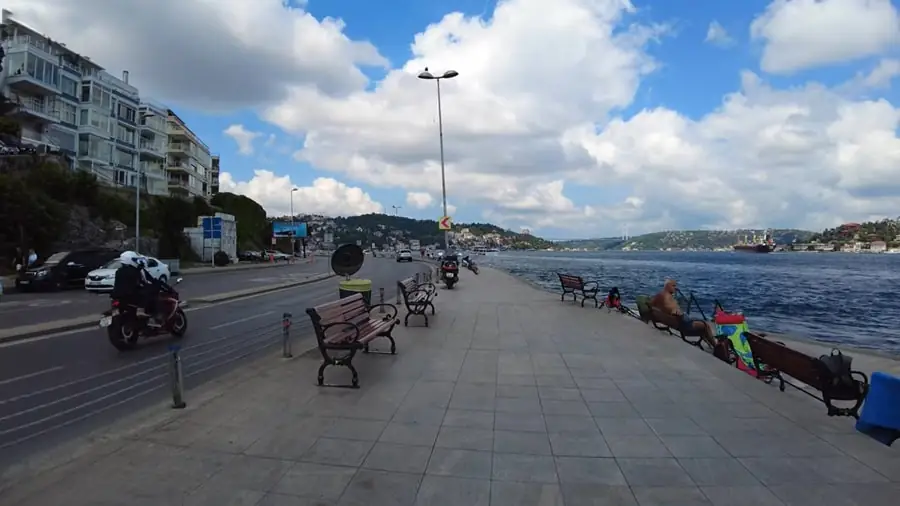The Bosphorus Coastal Walkway, a scenic path snaking along the shores of the Bosphorus Strait, offers a unique way to experience the heart of Istanbul. The Bosphorus Strait itself holds immense significance in Istanbul’s history and culture. This narrow waterway, separating Europe and Asia, served as a crucial trade route for centuries and continues to be a vital link between the Black Sea and the Marmara Sea. The Bosphorus Coastal Walkway allows visitors and locals alike to immerse themselves in the city’s vibrant atmosphere and stunning beauty.
History of the Bosphorus Coastal Walkway
The Bosphorus Coastal Walkway’s origins can be traced back to piecemeal public walkways built along the waterfront over the years. In recent decades, however, these paths have been gradually connected and upgraded, creating a more unified and accessible coastal route. This development has transformed the walkway into a popular destination for both locals seeking leisure and tourists eager to explore Istanbul on foot.
Route and Highlights

The Bosphorus Coastal Walkway stretches for several kilometers, with various starting and ending points depending on your desired walking distance. The most popular sections include Ortaköy on the European side to Bebek or Rumelihisarı.
The route boasts a treasure trove of landmarks and attractions. Be sure to keep an eye out for the iconic Ortaköy Mosque, a beautiful example of Ottoman architecture. A short detour takes you to the opulent Dolmabahçe Palace, a testament to the grandeur of the Ottoman Empire. Gazing across the water, you’ll spot the Maiden’s Tower, a historic structure shrouded in legend.
Further along, the extravagant Ciragan Palace provides another peek into Istanbul’s imperial past. History buffs won’t want to miss the imposing Rumeli Fortress, a formidable defensive structure built in just a few months. For a dose of modern marvel, look out for the Bosphorus Bridges, engineering feats that connect the European and Asian continents.
Scenic Beauty and Views
Beyond the historical significance, the walkway’s true charm lies in its breathtaking scenery. Panoramic views of the Bosphorus Strait dominate the landscape, offering endless opportunities to capture stunning photographs. Whether you choose to walk during the golden glow of sunrise or witness the sky ablaze with color at sunset, the Bosphorus guarantees a visual spectacle.
Activities along the Way
The walk is not just about sightseeing. Numerous cafes and restaurants lining the route offer a chance to rest and refresh yourself while enjoying the Bosphorus vista. Several parks and picnic spots provide opportunities for relaxation amidst the greenery. For a more adventurous experience, boat tours and cruises departing from various points along the walkway allow you to explore the strait from a different perspective.
Practical Information
Best Time to Visit: The Bosphorus Coastal Walkway is best enjoyed during spring (April-May) and fall (September-October) when the weather is mild with comfortable temperatures. Summers can get quite hot, and winters can be chilly with occasional rain. Elevate your experience of Bosphorus Coastal Walkway with our top-rated tour offering.
Tips for Walkers: Wear comfortable walking shoes with good treads, as the terrain can vary from flat paved paths to cobblestone streets and uneven gravel sections. Sunscreen and a hat are recommended during the summer months. Consider bringing a water bottle as well, as there aren’t always vending machines readily available along the entire route.
How to Access the Walkway: The walkway is easily accessible by public transportation. Several tram lines (tramvay) run along the coast, including the T1 line on the European side and the T3 line on the Asian side. You can also take a bus (otobüs) to get close to your preferred starting point. Look for stops near neighborhoods like Kabataş, Beşiktaş, Ortaköy, Karaköy, Üsküdar, or Kadıköy. If you’re staying near Taksim Square, the funicular (F1 line) can take you down to Karaköy, where you can connect to the coastal walkway.

